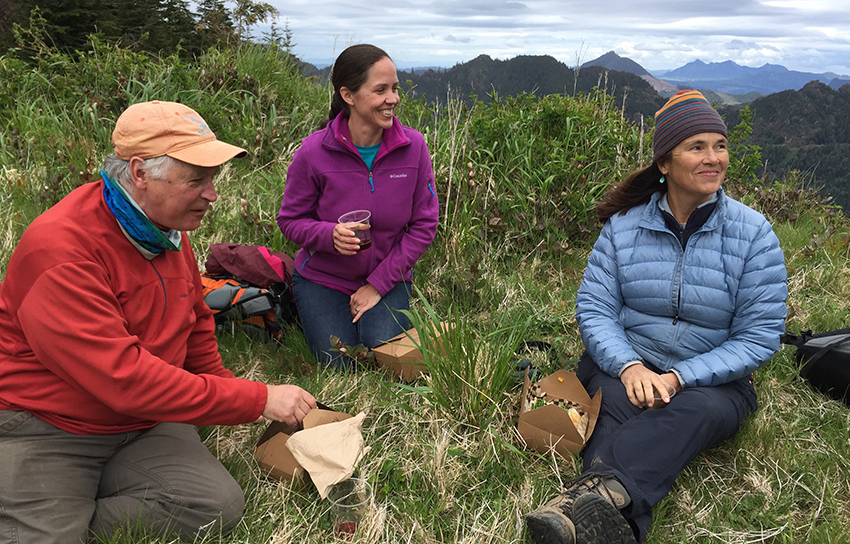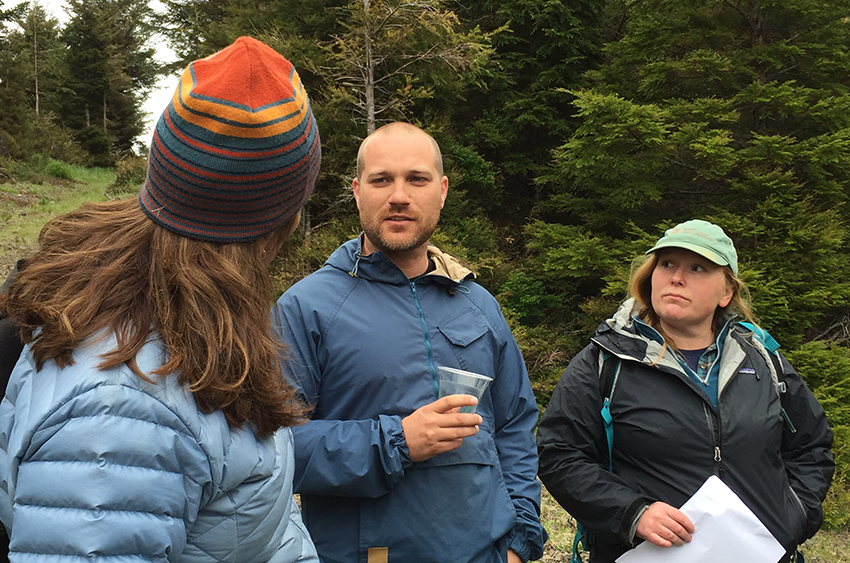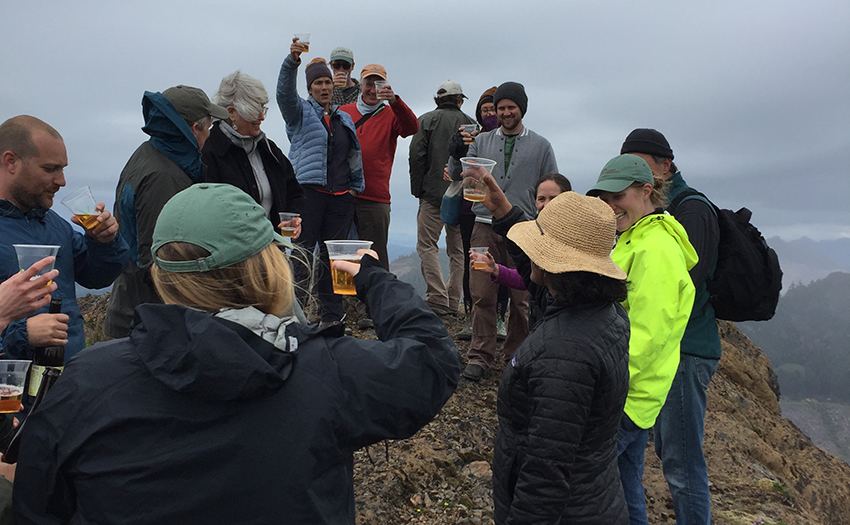
At the end of May, the staff of North Coast Land Conservancy (led by Executive Director Katie Voelke, above center) made a visit to the proposed Rainforest Reserve along with the staff of the current landowner, Onion Peak Holdings, and land manager, EFM, a forestland investment management company. We’ll be working together closely over the next several years—and have been for nearly a year already—while NCLC raises the necessary funds and conducts the required assessments to allow us to place this land in the public trust for permanent conservation. The field trip was an opportunity for everyone to get acquainted and, for some, a first chance to glimpse this land NCLC is working so hard to conserve. The first stop: a picnic lunch at a viewpoint in the Onion Peak complex. On the right is Bettina von Hagen, CEO of EFM.

NCLC has signed a purchase and sales agreement with Onion Peak Holdings, which gives the land conservancy the option to purchase the land within the next five years. In the interim, EFM is managing the land with input from NCLC. Jon Wickersham, NCLC’s associate director (center) is working directly with the landowner on the acquisition. NCLC Stewardship Director Melissa Reich (right) is currently working with the landowner on management and stewardship of the land in the short term while considering how NCLC will manage this land on its own in the future.

After lunch the group visited a bald peak of the kind that characterizes this landscape. They found an array of wildflowers in full bloom. The summits of these mountains fronting Oregon’s Coast Range host diverse plant communities, including some plants that are found nowhere else. Treeless hilltops and sloped subalpine meadows such as these are typically built atop basalt and are known as balds. Some 300 plant species have been identified on these coastal balds. Many of them are locally rare, endemic, or near the limit of their range.

After spending the better part of a day together, the group filled glasses with cider and raised a toast to their collaboration. It was NCLC that brought these 5,000 acres of key coastal forest habitat to the attention of Onion Peak Holdings in 2016. Onion Peak Holdings is functioning as a kind of bridge owner. It purchased the land last November and is holding most of it for acquisition by NCLC, managing the land for timber according to principles of sustainable forestry while NCLC works to acquire it. The land conservancy needs to raise $10 million for purchase and stewardship by 2021 in order to permanently conserve it as a Rainforest Reserve. It will be NCLC’s largest-ever land acquisition and will actually be the largest private acquisition of land for conservation in western Oregon.

Basalt outcrops such as this one, at the group’s picnic spot, are made up of rocks deposited in the ocean by a river of lava that poured into the ocean off the edge of the continent and were later uplifted by tectonic forces over millions of years. Read more about how this landscape was formed in a recent People+Plants+Wildlife blog post, Shaping the Coastal Edge.

A member of the EFM staff brought a dozen fresh eggs from his hens to bestow as a prize to whoever made the coolest plant sighting. No surprise that the winner was Melissa (standing with Lynette Villagomez, NCLC’s administrative and outreach assistant). Melissa is not only NCLC’s stewardship director but treasurer of the Filipendula Chapter of the Native Plant Society of Oregon. She spotted a large patch of camas blooming atop a bald peak, far from its usual wet valley floor habitat. (At least one anthropologist has speculated that native people planted camas, an important food source, high on coastal peaks to honor the plant, Melissa explained.)
It is rewarding to work in partnership with a landowner such as Onion Peak Holdings—one motivated by a desire to assist North Coast Land Conservancy in achieving its mission of helping to conserve Oregon’s coastal lands, forever.
Comments